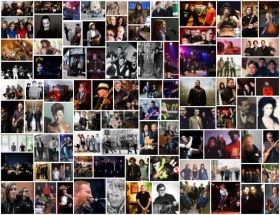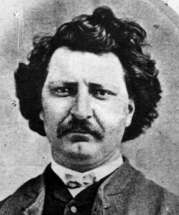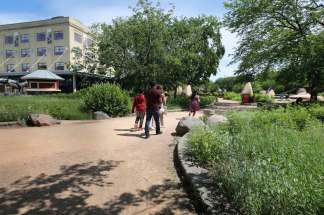Happy Indigenous 150, everybody!
Read this article for free:
or
Already have an account? Log in here »
To continue reading, please subscribe:
Monthly Digital Subscription
$0 for the first 4 weeks*
- Enjoy unlimited reading on winnipegfreepress.com
- Read the E-Edition, our digital replica newspaper
- Access News Break, our award-winning app
- Play interactive puzzles
*No charge for 4 weeks then price increases to the regular rate of $19.00 plus GST every four weeks. Offer available to new and qualified returning subscribers only. Cancel any time.
Monthly Digital Subscription
$4.75/week*
- Enjoy unlimited reading on winnipegfreepress.com
- Read the E-Edition, our digital replica newspaper
- Access News Break, our award-winning app
- Play interactive puzzles
*Billed as $19 plus GST every four weeks. Cancel any time.
To continue reading, please subscribe:
Add Free Press access to your Brandon Sun subscription for only an additional
$1 for the first 4 weeks*
*Your next subscription payment will increase by $1.00 and you will be charged $16.99 plus GST for four weeks. After four weeks, your payment will increase to $23.99 plus GST every four weeks.
Read unlimited articles for free today:
or
Already have an account? Log in here »
Hey there, time traveller!
This article was published 26/06/2020 (1991 days ago), so information in it may no longer be current.
Wednesday represents the 153rd anniversary of Confederation.
This July 1, however, is a little different: it’s Canada’s 150th anniversary of Indigenous inclusion — sort of.
Canada’s cultural fabric, laws, and everything else, from names to its economy, are built off Indigenous contributions, of course, but 1870 represents the year the Métis provisional government led Manitoba’s entry into Confederation, via the Manitoba Act.
This is the anniversary Canadians recognized — officially or not — that Indigenous nations are this country’s foundation.
First Nations, of course, governed this territory for centuries as sovereign communities, and continue to do so. It was this spirit which inspired Louis Riel and his government to write and pass the Declaration of the People of Rupert’s Land and the North-West, in 1869 — a declaration of Indigenous independence for Manitoba.
The Manitoba Act led to the negotiation of Treaty 1 and Treaty 2, signed more than a year later (Aug. 3 and 21, 1871).
These represent the first “legal” agreements between Indigenous peoples, the British Crown, and the Dominion of Canada.
Happy Indigenous 150, everybody!
Unlike 1867, when Indigenous peoples were virtually ignored by everyone in Parliament (and Canadian society, for that matter), 1870 is the year today’s Canada began formal relationships with Indigenous peoples.
Of course, there were treaties, agreements, and interactions that came before this, and certainly a whole lot of Canadian violence against Indigenous communities that came afterward, but this sesquicentennial is worth marking.
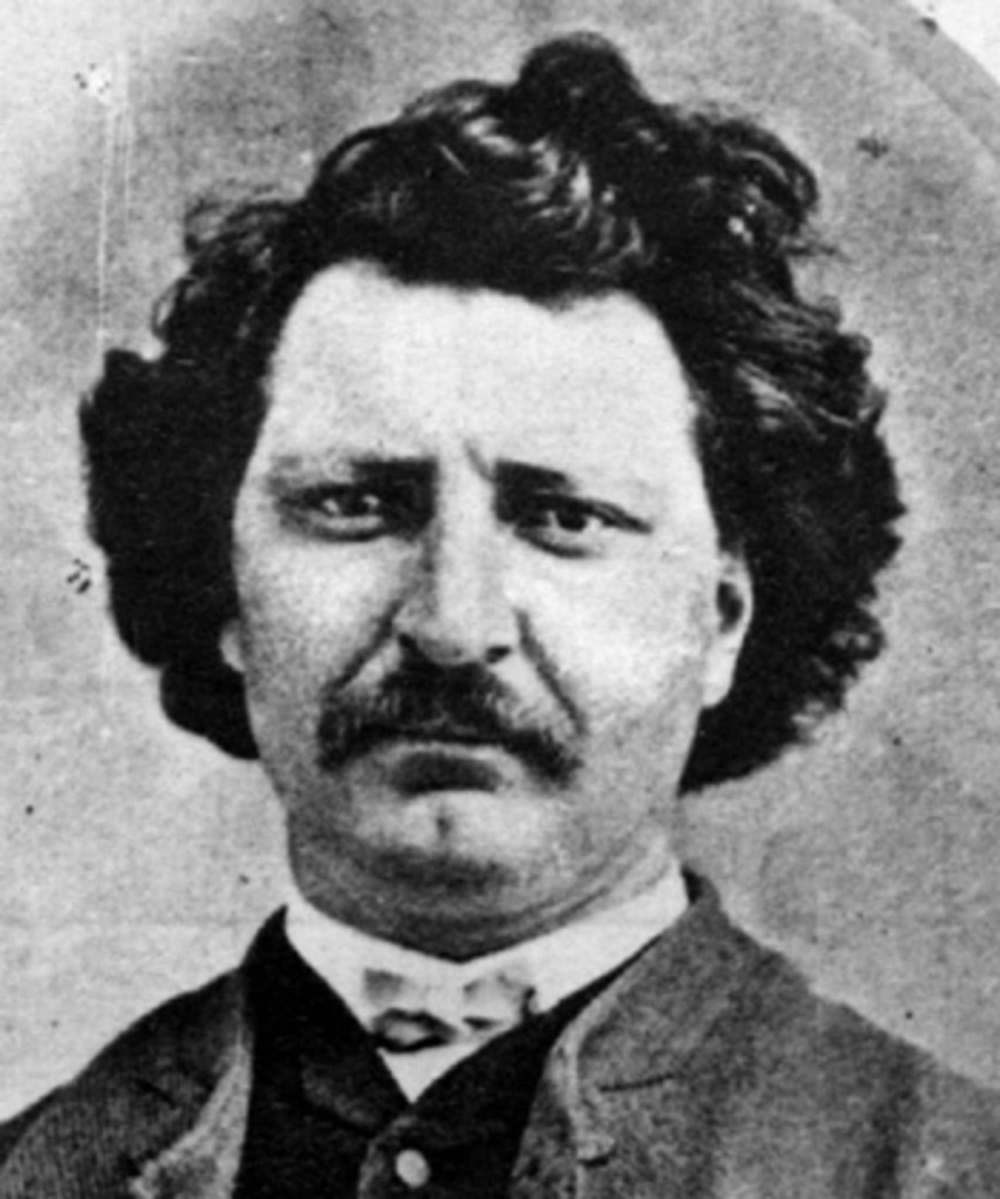
While recent events remind us Indigenous communities continue to endure more violence, oppression, and poverty than almost anyone else, there are signs things are changing.
This past week featured the unveiling of another public art installation at The Forks, this one by Métis visual artist Val Vint. Curated by Métis Prof. Julie Nagam, Vint’s Education is the New Bison is a 12-foot metal bison made out of Indigenous-authored books and surrounded by quotes from Riel, Sen. Murray Sinclair and Haida artist Robert Davidson.
Visitors to Nestowaya (the Indigenous name of The Forks) have eight Indigenous public art installations to visit (all in the past decade), with two forthcoming by artists KC Adams and Jaimie Isaac in 2021. This is not to mention a future, full-time Indigenous ceremonial space on Niizhozibean (formerly the South Point).
Much has been made of the removal of the Christopher Columbus statue in Saint Paul, Minn., a few weeks ago; locally, the Queen Victoria statue at the Manitoba legislature was doused with white and red paint. This follows a Canadian trend where monuments of figures who perpetrated violence against Indigenous peoples are being addressed by grassroots efforts.
Considering there remains no monument on the legislature grounds to recognize First Nation contributions, I’d call this an editing of the space.
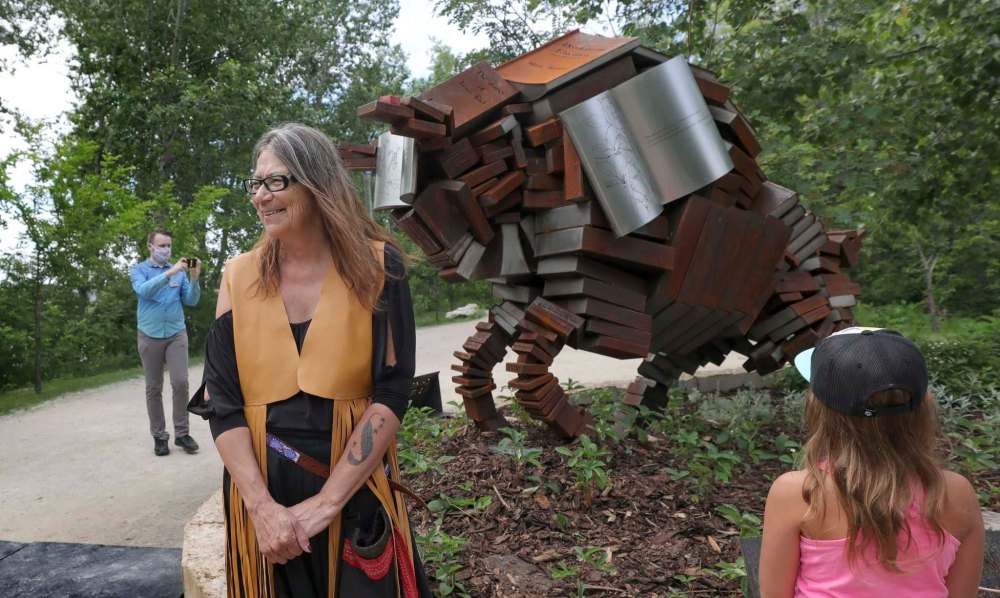
Meanwhile, the City of Winnipeg continues its Welcoming Winnipeg: Reconciling Our History project, which seeks to “re-examine historical markers and place names to resolve the absence of Indigenous perspectives, experiences, and contributions in the stories remembered and commemorated in Canadian cities.”
While COVID-19 may put a damper on July 1 celebrations, this year has been a reminder Indigenous lives are a part of everyone’s lives.
To mark this, the Winnipeg Chamber of Commerce released a “Truth and Reconciliation Roadmap” on June 21. Spearheaded by chamber chairwoman Jessica Dumas (the first Indigenous person to hold the position), the guidebook offers assistance to Winnipeg businesses on how to educate employees about Indigenous history, Indigenize workplaces, and engage Indigenous communities in healthy, supportive ways.
There’s more.
This week, planters were installed in the sixth annual incarnation of the Indigenous Garden, planted at Air Canada Park on Portage Avenue, sponsored by the city and APTN.
It’s impossible to ignore the Indigenous leadership in our community.
It’s impossible to ignore the Indigenous leadership in our community. For instance, Métis MP Dan Vandal has been front and centre condemning police violence against Indigenous communities, and Lakota MP Leah Gazan has been leading a fight against city officials blasting noise to harass Winnipeggers experiencing homelessness.
Peguis First Nation unveiled its second urban reserve in Winnipeg, and officially unveiled its new urban reserve in Selkirk.
More than 700 people tuned in and asked more than 150 questions at a tele-town hall held by Treaty 1 First Nations developing the former Kapyong Barracks site. Viewers found out, in addition to a gas bar, condominiums, restaurants, and wider driving lanes, Winnipeggers will get a new skating rink, walking paths, and a monument to Indigenous and non-Indigenous veterans.
So, happy Indigenous 150, Canada. There’s far more work to do.
niigaan.sinclair@freepress.mb.ca

Niigaan Sinclair is Anishinaabe and is a columnist at the Winnipeg Free Press.
Our newsroom depends on a growing audience of readers to power our journalism. If you are not a paid reader, please consider becoming a subscriber.
Our newsroom depends on its audience of readers to power our journalism. Thank you for your support.

![Thomas Scott (c. 1842 – 1870) was an Irish-born Canadian and fervent Orangeman. Scott was born in the Clandeboye area of County Down, in what is now Northern Ireland.[1] He was recruited by Canada to fight in the Red River Rebellion and was captured and imprisoned in Upper Fort Garry by Louis Riel and his men while trying to attack it along with 34 other volunteers. Scott made an attempt to escape but was recaptured by Riel's men and was summarily executed for committing insubordination. Scott's execution led to an outrage in Ontario, and was largely responsible for prompting the Wolseley Expedition, which forced Louis Riel, now branded a murderer, to flee the settlement. http://en.wikipedia.org/wiki/Thomas_Scott_%28Orangeman%29](https://dev.winnipegfreepress.com/wp-content/uploads/sites/2/2022/05/Thomas+Scott.jpg?w=100)


